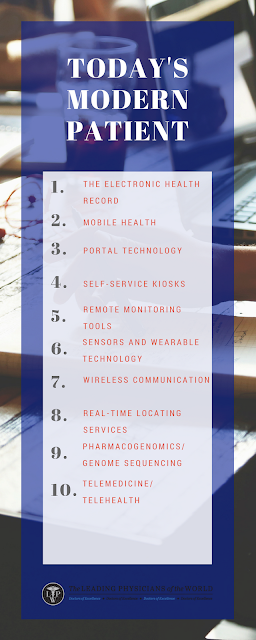Today's Wired Digital Patient
Thanks to
innovative mobile technology and the prevalence of broadband networks, patients
are investing in their own healthcare more than ever before. From searching for
a physician online to tracking fitness activities via wearable technology—
patients are embracing mHealth and technologies that will help improve their
well-being. In fact, the number of adults using smartphones to monitor their
health grew to 75 million in 2012 — a number expected to more
than triple by the end of 2018! However, as more and more patients
get active through mHealth technology, security should remain top of mind for
providers. According to EHR Intelligence, security was the #1 concern among
individuals, so ensuring the connection, transmission and protection of patient
data is imperative.
We are now
at the point where it is possible to measure almost every component of human
physiology and many elements of behavior. But just having data from disparate
devices and apps does not alone translate to better health and prevention or
improved management of disease. The data and analytics need to connect with
clinical endeavors to be translated into knowledge and actionable information.
But the
virtues of the digital age are not always aligned with those of psychotherapy.
It takes time to change behavior and alleviate emotional pain, and for many
patients constant access is more harmful than helpful. These days, as never
before, therapists are struggling to recalibrate their approach to patients
living in a wired world.
For some,
the new technology is clearly a boon. Let’s say you have the
common anxiety disorder social phobia. You avoid speaking up in class
or at work, fearful you’ll embarrass yourself, and the prospect of going to a
party inspires dread. You will do anything to avoid social interactions.You see
a therapist who sensibly recommends cognitive-behavioral therapy, which will
challenge your dysfunctional thoughts about how people see you and as a result
lower your social anxiety. You find that this treatment involves a fair amount
of homework. You typically have to keep a written log of your thoughts and
feelings to examine them. And since you see your therapist weekly, most of the
work is done on your own.
Are you struggling
with major depression? Digital technology may soon have something for you,
too. Depressed patients are usually lacking in motivation and pleasure; an app
easily could lead patients through the day with chores and activities, like
having a therapist in one’s pocket. Not just that, but the app might ask you to
rate depressive symptoms like sleep, energy, appetite, sex drive and
concentration in real time, so that when you next visit your psychiatrist, you
can present a more accurate picture of your clinical status without having to
worry about your recall.
In 2018,
the data dots are starting to be connected at meaningful scale, particularly as
incentives in healthcare become more aligned towards "value based
care", rewarding prevention, proactive care and improved outcomes. The internet
of things is rapidly coming to the "internet of the body and
healthcare". With it comes the promise of leveraging these diverse mobile
and connected technologies beyond common health and fitness applications to
make them truly impactful for the prevention and management of acute and
chronic disease, and to further bring healthcare outside of the walls of a hospital.
We are
moving beyond simple wrist-based accelerometers. Smart watches regularly
capture heart rate, and soon may add cuffless continuous blood pressure
monitoring and glucose measures. Disposable vital-sign patches can transmit
streaming ECG, posture, temperature, stress data and more. Integrated home
diagnostic "medical Tricorder" platforms and connected pill bottles
are coming to market. These will be paired with Amazon Echo and Your.MD and
similar healthcare chatbots as interfaces. Mental health can be discerned from analyzing
our speech and the "digital exhaust" from our smartphones. Breath can
be analyzed for more than alcohol, to track hydration status and molecules that
can indicate a metabolic or malignant disease. Sensors in our beds can readily
track the quantity and quality of sleep.
Digital
technology has the potential to either enhance or confound therapy, but much
depends on the patient and the condition being treated. Some patients will find
that the glowing screen only feeds their psychopathology.
Others will find digital technology a boon to self-esteem and assertiveness. We
are only beginning to figure out which patients are which.




Comments
Post a Comment